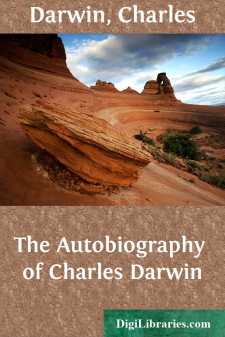Categories
- Antiques & Collectibles 13
- Architecture 36
- Art 48
- Bibles 22
- Biography & Autobiography 813
- Body, Mind & Spirit 142
- Business & Economics 28
- Children's Books 17
- Children's Fiction 14
- Computers 4
- Cooking 94
- Crafts & Hobbies 4
- Drama 346
- Education 46
- Family & Relationships 57
- Fiction 11829
- Games 19
- Gardening 17
- Health & Fitness 34
- History 1377
- House & Home 1
- Humor 147
- Juvenile Fiction 1873
- Juvenile Nonfiction 202
- Language Arts & Disciplines 88
- Law 16
- Literary Collections 686
- Literary Criticism 179
- Mathematics 13
- Medical 41
- Music 40
- Nature 179
- Non-Classifiable 1768
- Performing Arts 7
- Periodicals 1453
- Philosophy 64
- Photography 2
- Poetry 896
- Political Science 203
- Psychology 42
- Reference 154
- Religion 513
- Science 126
- Self-Help 84
- Social Science 81
- Sports & Recreation 34
- Study Aids 3
- Technology & Engineering 59
- Transportation 23
- Travel 463
- True Crime 29
Note on the Resemblances and Differences in the Structure and the Development of the Brain in Man and Apes
by: Charles Darwin
Description:
Excerpt
The controversy respecting the nature and the extent of the differences in the structure of the brain in man and the apes, which arose some fifteen years ago, has not yet come to an end, though the subject matter of the dispute is, at present, totally different from what it was formerly. It was originally asserted and re-asserted, with singular pertinacity, that the brain of all the apes, even the highest, differs from that of man, in the absence of such conspicuous structures as the posterior lobes of the cerebral hemispheres, with the posterior cornu of the lateral ventricle and the hippocampus minor, contained in those lobes, which are so obvious in man.
But the truth that the three structures in question are as well developed in apes' as in human brains, or even better; and that it is characteristic of all the Primates (if we exclude the Lemurs) to have these parts well developed, stands at present on as secure a basis as any proposition in comparative anatomy. Moreover, it is admitted by every one of the long series of anatomists who, of late years, have paid special attention to the arrangement of the complicated sulci and gyri which appear upon the surface of the cerebral hemispheres in man and the higher apes, that they are disposed after the very same pattern in him, as in them. Every principal gyrus and sulcus of a chimpanzee's brain is clearly represented in that of a man, so that the terminology which applies to the one answers for the other. On this point there is no difference of opinion. Some years since, Professor Bischoff published a memoir (70. 'Die Grosshirn-Windungen des Menschen;' 'Abhandlungen der K. Bayerischen Akademie,' B. x. 1868.) on the cerebral convolutions of man and apes; and as the purpose of my learned colleague was certainly not to diminish the value of the differences between apes and men in this respect, I am glad to make a citation from him.
"That the apes, and especially the orang, chimpanzee and gorilla, come very close to man in their organisation, much nearer than to any other animal, is a well known fact, disputed by nobody. Looking at the matter from the point of view of organisation alone, no one probably would ever have disputed the view of Linnaeus, that man should be placed, merely as a peculiar species, at the head of the mammalia and of those apes. Both shew, in all their organs, so close an affinity, that the most exact anatomical investigation is needed in order to demonstrate those differences which really exist. So it is with the brains. The brains of man, the orang, the chimpanzee, the gorilla, in spite of all the important differences which they present, come very close to one another" (loc. cit. p. 101).
There remains, then, no dispute as to the resemblance in fundamental characters, between the ape's brain and man's: nor any as to the wonderfully close similarity between the chimpanzee, orang and man, in even the details of the arrangement of the gyri and sulci of the cerebral hemispheres. Nor, turning to the differences between the brains of the highest apes and that of man, is there any serious question as to the nature and extent of these differences. It is admitted that the man's cerebral hemispheres are absolutely and relatively larger than those of the orang and chimpanzee; that his frontal lobes are less excavated by the upward protrusion of the roof of the orbits; that his gyri and sulci are, as a rule, less symmetrically disposed, and present a greater number of secondary plications. And it is admitted that, as a rule, in man, the temporo-occipital or "external perpendicular" fissure, which is usually so strongly marked a feature of the ape's brain is but faintly marked....



















